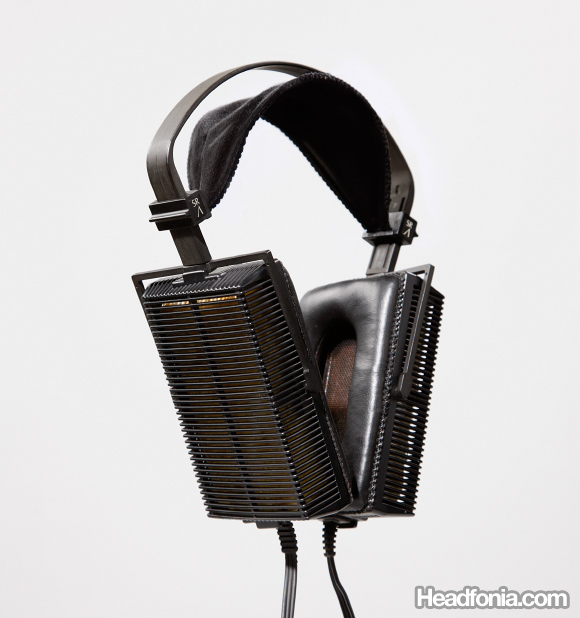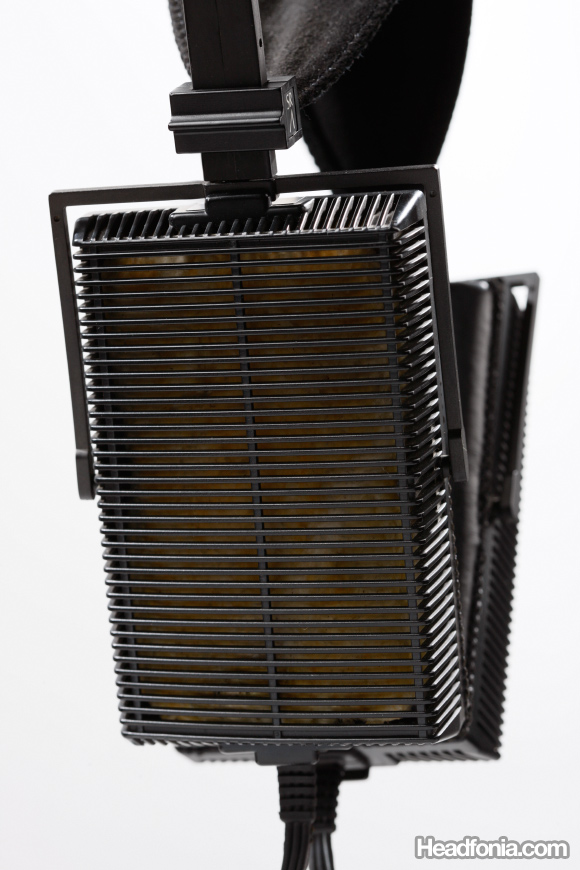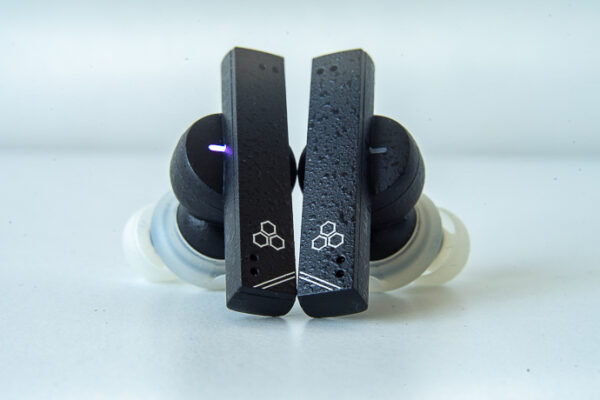With a little bit of patience and luck, I managed to get my hand on a Stax SR-Lambda Earspeakers, which is admittedly a bit rare, and expectedly so, since it was discontinued more than two decades ago. Introduced in 1979, it was a milestone product for the Stax Company, the first iteration of the Lambda series and the predecessor to all the Stax Lambdas produced after it, including the Stax SR202 Earspeakers which we have reviewed previously in this website. All the Lambda headphones owe their look and many of their designs to this original SR-Lambda. For this review, I am pairing the SR-Lambda with an almost as old Stax SRD-7 adaptor. The SRD-7, as the name says, is an adaptor which needs to be paired with a speaker amplifier to function properly. The good thing about it is that it is significantly cheaper than a full-size electrostatic amp, so you can get better bang for the buck. However, does this setup sound anywhere as good as the SR202?
I have been enjoying the SR-Lambda setup since the day I received it. Coming from the SR202, the sound didn’t disappoint me at all; it has all the electrostatic qualities I was expecting for. If you haven’t listened to a good electrostatic setup before, the first thing that will probably startle you when you listen to one is the sense of how clear everything sounds. One of my friends mentioned that after getting his electrostatic setup, his previous headphones started to sound veiled. He felt as if the singer that was singing behind a veil before has now come into the room and sang directly to him. This SR-Lambda also has that level of clarity, and there are several reasons why the SR-Lambda sounds so clear. The first one is just the nature of a good electrostatic driver, which is the excellent transient speed and distortion-less sound. To give you an example, listening to cymbals through the SR-Lambda, when the cymbal was hit, you know precisely when it was hit, and you can hear the clear and undistorted sound of the cymbal shimmering and fading into the background. Because each note is very well controlled without smearing on top of each other, it is also easier to focus, separate and listen to each instrument when the music gets complex. On many headphones, some instruments may sound more dominant and emphasized than the other, making it hard to focus on each. With the SR-Lambda, the instruments are voiced more equally in volume and there is an ample space and air between each instrument for them to sound distinct from each other. Even the K701, which is no slouch, can’t quite match the SR-Lambda in these areas. However, if you like long overhang and romantic decay like the HD650, you won’t get it with the SR-Lambda.
Another reason why the SR-Lambda sounds very clear is its realistic timbre. You hear some headphones described as metallic-sounding or wood-sounding (in a good way). I wouldn’t really associate the SR-Lambda’s timbre with an object. It is just simply clear and natural sounding. In terms of frequency response, the SR-Lambda is a relatively uncolored headphone. There is a certain liveliness to the sound, but it is more associated with the fast nature of the electrostatic driver than its frequency response. The only noticeable bumps are some punch in the upper bass and a bit forward midrange. The soundstage of the SR-Lambda is decent, quite wide but a bit diffused. Positioning of instruments is good, but the edge between each instrument in the soundscape is a bit blurred. On the good side, this wide and diffused soundstage might have resulted in the big sound of instruments. I was looking for an explanation on why orchestral pieces sound ‘grand’ with the Stax, and I found out that part of it can be explained by the fact that instruments just sound ‘big’ through the Stax. To explain, when I was listening to the Hippo Pearl (an IEM), the sound of an organ was about 3-inches in height playing in my head. When I switched to the Stax, the organ became bigger, about 7-inches in height reaching outside of my head. The organ’s sound on my DT531, which is quite big- sounding in its own right, was a little less than 6-inches tall.









Derek McLachlan
I have had the Stax SR-Lambda since the early 80’s & love them.
I am using the SRD-7 adaptor & wondered if the sound would be much better with a SRM-1 driver?
Mike
Hi Derek,
I think Hadi did a comparison on that and found the sound to improve with the SRM1Mk2 driver. With the SRD-7, and depending on the amp you use at the backend, you get better impact, but with the SRM1Mk2, you get better resolution.
Hadi
Hi Derek, glad to hear that they are still running strong. The SR-Lambda is quite underrated among the Lambda frame Stax.
I have only tried SRD-7 with 3 amps: a very cheap chinese T-Amp, a Pioneer vintage receiver, and an adcom preamp. I have also tried the SR-Lambda with an SRM-1/MK-2 amplifier. I quite like the SRM-1/MK-2 a bit more than the SRD-7+amp combos, as it fills some unevenness in the frequency balance that is evident through SRD-7 combos I've tried. How much better? I guess that really depends on your expectation.
Also, the SRD-7 sound is dependent on the amp behind it, and with a good amp, who knows whether it will be better than th SRM-1/MK-2.
Hopefully that helps.
Mike
Slightly off topic. Last night I opened up the Stax SR-34 electrets (http://www.headfonia.com/stax-sr-34-short-review/), and hooked the SRD-4 to a combination of Zana Deux (preamp) and Adcom GFA-5802 (power amp). The sound was remarkable, and much more alive than when I listened to it the last time. So I'm sure that the Zana has a good role in that sound. Treble was a little harsh though, and I think that's due to the GFA-5802. I need to find a low power, good quality and neutral solid state to drive the SRD-4 with. I think the result will be very good.
Perhaps next time I can try the Omega2 out of a good SRD-7 set up.
Tom
I still have and use my SR-Lambdas. They sound much better if you remove the back padding. This removes/subdues some sibiliances due to reflective nature of the padding.
Mike
Thanks Tom. I've heard of that mod before. But normally such mods is a gain some-lose some deal. Perhaps you notice anything that's missing from the original sound after removing the padding?
Derek McLachlan
Thanks for the comments on SR-Lambda & SRD-7 sound. Removing the back padding sounds like a good idea.
My inside padding disintegrated & fell out years ago – any suggestions on how to fix that?
It makes me nervous that I will end up with my ears on the panels!
Mike
I'll let Hadi answer this one as he's far more familiar with Lambdas. 🙂
matthew_wilson
I’m curious why you didn’t use the SRM-1/MK-2 to operate both the SR-Lambda and the SR202, thereby eliminating any variables between source/amplifiers? Would this have not given you a more unbiased review of the headphones themselves?
Mike
Thanks good question. The review was done by Hadi who’s my Stax expert friend.
I don’t remember precisely since this review was done some 3 years back, but if I remember correctly:
The Lambda is a normal bias while the SRM1Mk2 is the variant that only works with Pro bias, which includes the SR-002. Hence pairing the Lambda with the SRD-7 (and if I remember correctly the SRD-7 also comes in two versions: normal and pro bias).
Later I did a review which includes the Lambda Pro which is a newer variant of the Lambda that supports Pro bias.
Tus-Chan
I strongly disagree with your method of using two entirely different amplifiers to compare the SR-202 and the Lambda NB. The amplifier makes a huge difference in the sound of an electrostat. You should have used an amp where there are both a Pro and Normal bias output wired in parallel (such as the T1 or SRM-1/MK2), so you can compare the two on even ground.
Mike
Different amps only change the coloration. Vintage Staxes are really not that different in terms of technicalities.